
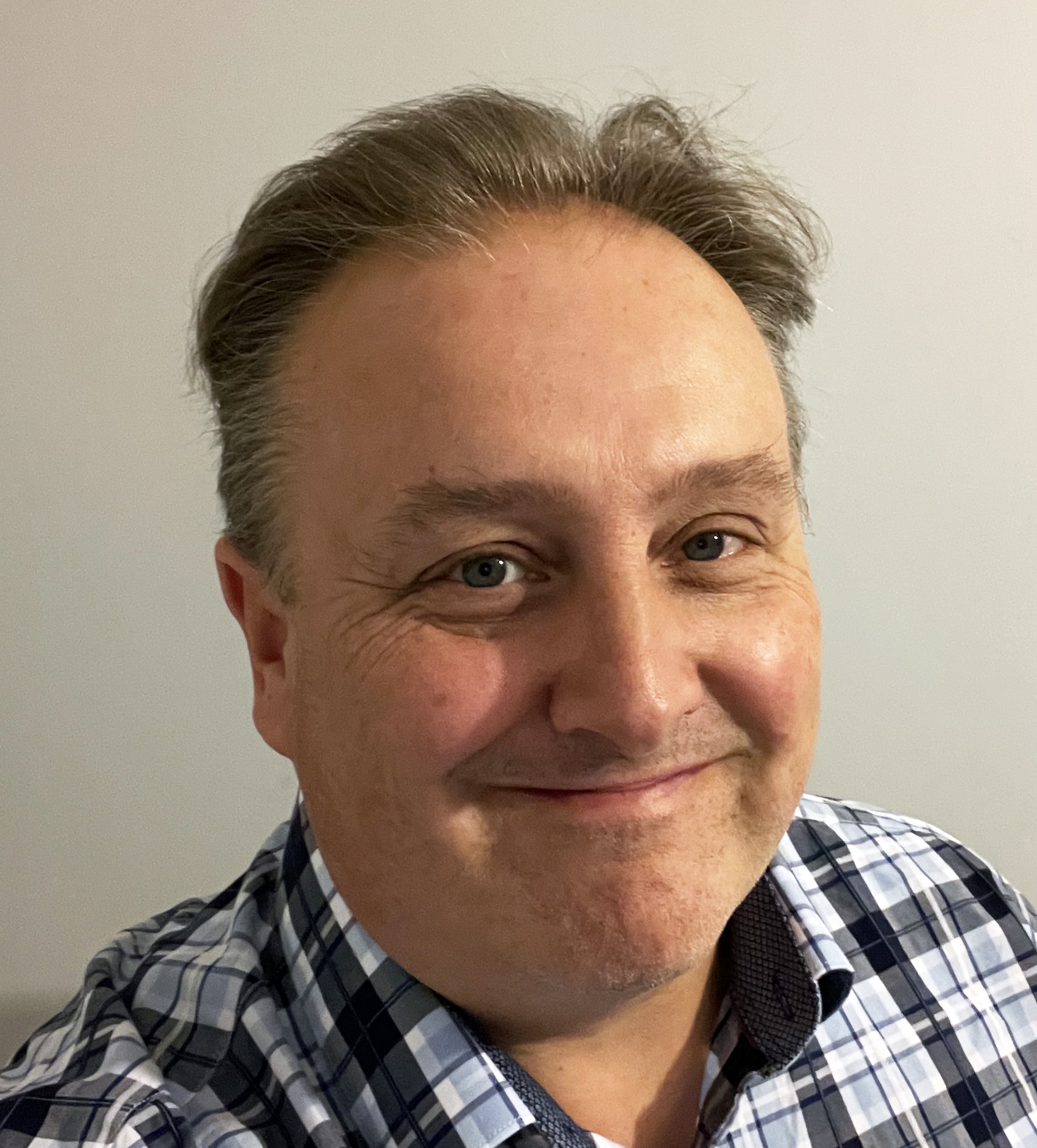
While 2021 has been a year best described as frustrating, it turned out to be something of a watershed time for AV fans, at least. OLED TVs finally got some proper hardware innovation to go with the usual software refreshes, for one thing, while the premium LCD TV world was transformed by the arrival of next-gen Mini-LED screens from the biggest brands.
Big years in tech are often followed by unusually quiet ones, though. So can we really expect anything truly exciting to happen to our TVs in 2022? Actually, it looks like we probably can – from high-end technologies getting even cheaper, to improved audio, to more gaming features, to a whole new technology called QD-OLED.
Here are the TV trends to expect in 2022 – and you won't have to wait long to see some of these, with big announcements from most TV makers expected during CES 2022 in the first week of January!
1. QD-OLED shakes up the industry
The QD here refers to Quantum Dots, signalling a marriage of convenience and, hopefully, picture quality strengths between the QLED and OLED worlds. So, in theory at least, QD-OLED TVs will combine the black levels and pixel-level local contrast heroics of OLED panels with the high brightness and colour volumes of Quantum Dot TVs.
The pixels in QD-OLED panels are created by using a blue OLED base to light up red and green sub-pixels created using appropriately tuned Quantum Dots. Combined together, these blue OLED and red/green QD elements can create true whites alongside the inky black levels OLED is always known for – as well as any colour in between. All with more potential brightness than you get with standard OLED panels, while using less power.
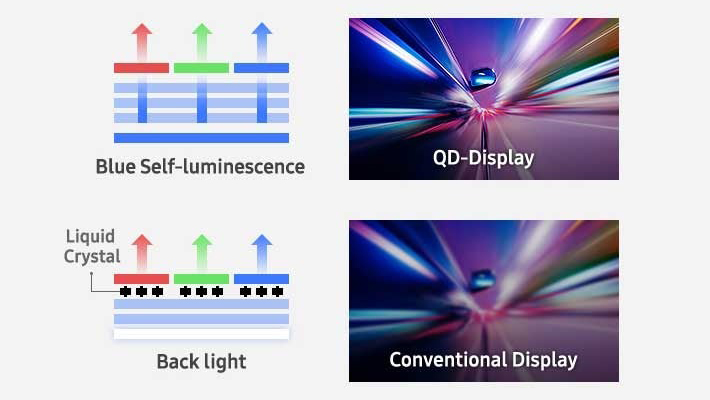
Samsung's diagram comparing the structure of a QD-OLED screen to a regular LCD panel.
Samsung has been the main driver of QD-OLED development so far, and already has QD-OLED screens circulating in the commercial screens market. The technology doesn’t so far seem scheduled to be a major part of Samsung’s presence at the imminent Consumer Electronics Show in Las Vegas, though. So if Samsung QD-OLED TVs are truly a thing for 2022, we may be looking at them launching later in the year than the rest of Samsung’s latest TV range.
Rather awkwardly, Samsung has spent the better part of a decade giving OLED TVs (which are championed by massive South Korean rival LG Electronics) a seriously hard time. I guess Samsung might argue, though, that the addition of Quantum Dots has changed the OLED proposition. There are rumours, too, that Samsung may eschew the QD-OLED name in favour of something else that doesn’t have ‘OLED’ in it.
Sign up to the T3 newsletter for smarter living straight to your inbox
Get all the latest news, reviews, deals and buying guides on gorgeous tech, home and active products from the T3 experts
There are other rumours coming out of South Korea, though, suggesting that Samsung might also be on the verge of launching some ‘straight’ OLED TVs, too. If true, this really would prove that Samsung has fully buried the OLED hatchet.
Samsung is not the only TV brand rumoured to be launching QD-OLED TVs in 2022. Sony is supposedly following suit, too. In fact, Sony’s QD-OLED screens might even come to market sooner than Samsung’s.
We should add a note of caution around the fact that rumours of QD-OLED screens reaching the consumer market have been circulating for a couple of years now, with nothing actually coming to fruition. This time round, though, there really does appear to be some genuine grounds for hope.
2. OLED and Mini-LED reach the masses
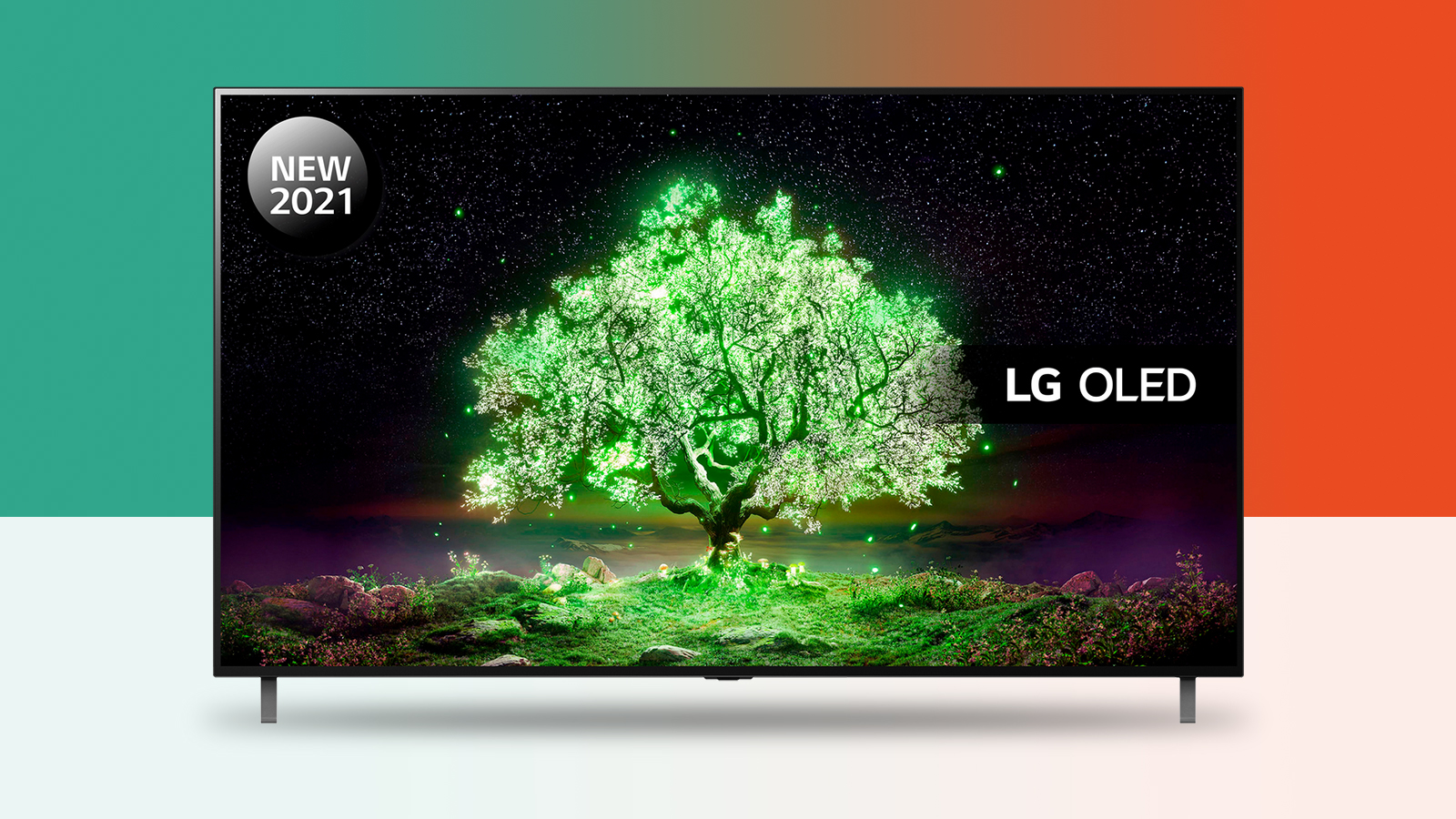
The LG A1 is the company's cheapest OLED TV so far – could the A2 be even cheaper?
What about ‘normal’, non-QD OLED TVs? Can we expect anything really dramatic to happen there in 2022? Perhaps not, but there are still good things afoot. Early rumours suggest there will be more a consolidation of the OLED advances already made in 2021. So we may see the higher brightness panels in the most premium models creeping down to cheaper OLED TV ranges and brands than we did in 2021, while standard-brightness OLED panels can come down even further in price.
We might also see more widespread use of heat sink layers alongside the higher brightness panels, enabling the best OLED TVs to deliver even punchier HDR highlights than they managed this year.
This will require some stronger/clearer marketing around the differences between high-brightness OLEDs and regular models than we got in 2021, but that shouldn’t be too hard to achieve.
Aside from this, OLED TVs from all brands will likely boast improved processing designed to unlock more of their potential with different source types.
The same sort of consolidation process is likely to apply to Mini-LED technology, in which traditional LEDs are replaced by much smaller lights so that pictures can be delivered with much more localised light control.
We will likely start to see Mini-LED creeping into cheaper models further down the TV ranges of Samsung, LG, TCL and Hisense, while also perhaps seeing the technology adopted by other brands. Sony, in particular, may find it difficult to ignore Mini-LED again for its 2022 mid-range LCD TVs, unless it commits totally to QD-OLED as its ‘next gen’ solution, though that won't be cheap.
We may also see flagship Mini-LED models in 2022 trying to drive even more separate dimming zones than they did in 2021, raising HDR performance even further – though it’s perhaps more likely that we’ll mostly just see improvements in the processing used to drive Mini-LED lighting arrays, and a general reduction in price.
3. Where’s MicroLED gone?
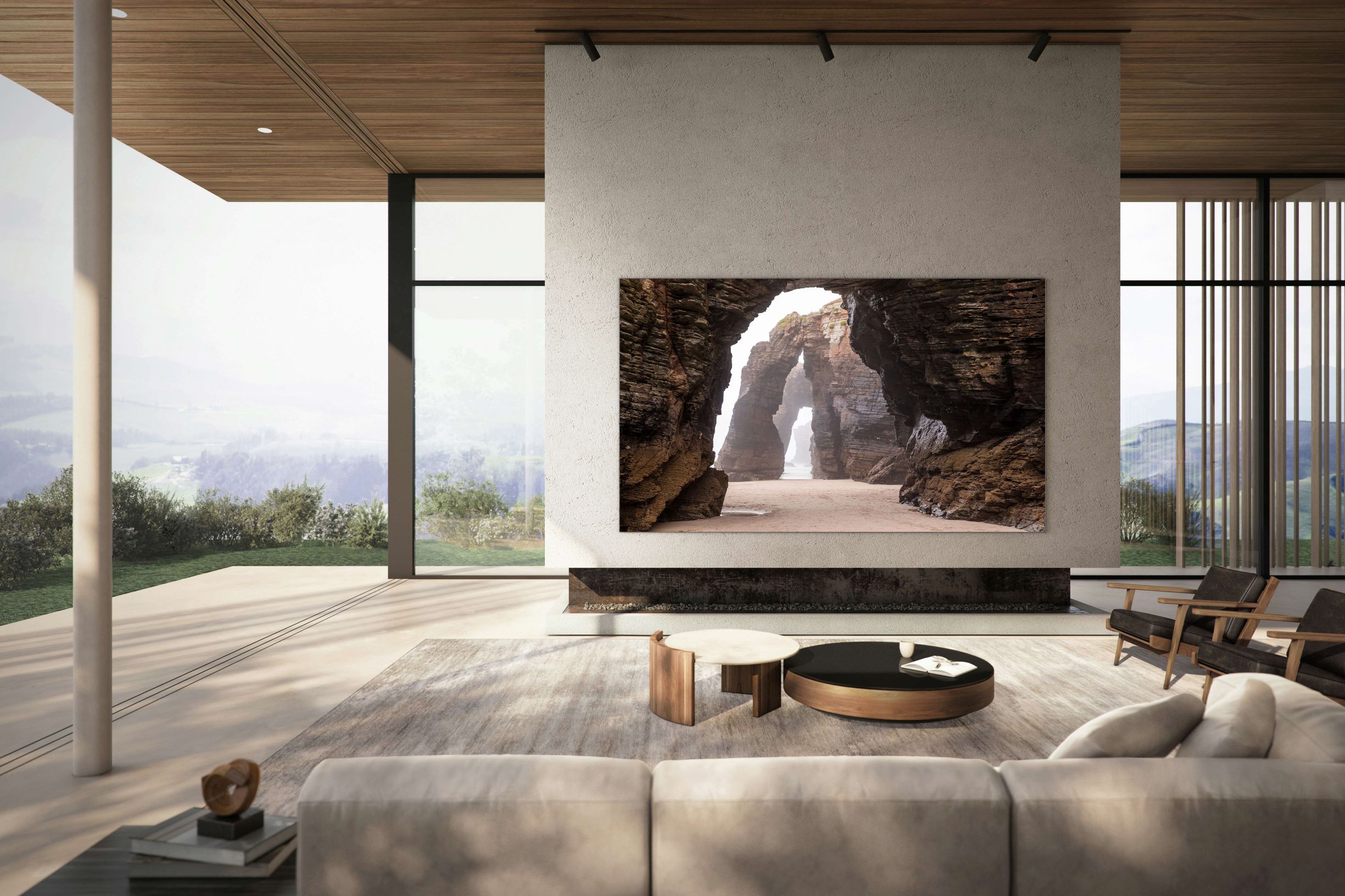
Samsung's MicroLED TVs arrived with a lot of fanfare in 2021, but it's gone quiet since…
All this interest in Mini-LED, QD-OLED and improved ‘standard’ OLED panel technologies seems to be coming at the expense of another technology that’s long been heralded as the next big TV thing: MicroLED.
MicroLED is a technology where every pixel makes its own light, like OLED, but it doesn't use any organic elements and so can be run more brightly without any concerns over screen burn – basically, then best parts of OLED and LCD in one.
It hasn’t completely disappeared from the consumer roadmap, thankfully, but don't expect to see it in many homes. Samsung looks almost certain to have two or three MicroLED models ’available to order’ in 2022. The problem is that the technology continues to only be a feasible option for very wealthy people.
Samsung is the only brand seriously still pushing Micro LED as a ‘living room’ proposition (other companies make it for commercial screens) but it simply hasn’t yet been able to overcome the challenges associated with manufacturing MicroLED screens at any sort of affordable cost, or at remotely mainstream screen sizes (Samsung announced in 2021 that it was shelving plans for MicroLED screens as small as 70 or 80 inches in size). So if you were hoping 2022 would finally be the year of MicroLED, it may be time to back a different horse.
Many see Samsung’s switch towards OLED-based technologies as a tacit admission by the brand that MicroLED won’t be ready for the mainstream for years.
4. Bigger will continue to be better
The shift towards staying at home for our entertainment over the past 18 months has accelerated the trend towards bigger screen sizes that’s been ongoing for years.
In particular, trends show that 75 inches will become the new 65 inches for many AV fans in 2022, especially as more and more brands are starting to make 75-inch screens seriously affordable compared with where they were just a couple of years ago. They used to be for the rich only, but you can now find options among the best TVs under £1000 and best TVs under $1000.
There are signs, too, that the previously large cost cliff of going up to 85 inches or more may be seriously eroding. It’s perhaps worth remembering, though, that screens this big can be pretty ruthless about exposing picture quality weaknesses, so going for the cheapest option may not be the best idea.
One extra wrinkle worth mentioning in this section is the likely growth of the ultra-short throw projector market as an alternative to big-screen TVs. Hisense, in particular, is leaning into this by selling new all-in one ‘laser TVs’ that combine a laser-based ultra short throw projector with a rigid, high reflectivity screen. But standalone ultra short throw projectors are becoming ever more affordable and available, and for many will be the best projector option.
5. Will 2022 finally see 8K TVs come of age?

Samsung's 8K Neo QLED TVs are simply phenomenal, but will the become more tempting for the masses?
The short answer is no – though there is a longer answer along the lines of ‘well maybe. A bit’.
The short answer is based around the fact that 2022 still doesn’t look set to bring us much in the way of the native 8K sources many consumers want to see before taking the 8K plunge. There is some positive movement in this area on a technical level, with the 8K-friendly AV1 compression system now out in the wild. In fact, YouTube is already using this to support 8K videos – and perhaps more excitingly from a mainstream entertainment perspective, Netflix has also started to deploy AV1 compression on compatible devices.
But Netflix definitely is not streaming 8K yet. And nor is any other mainstream streaming service, despite Rakuten saying it would a couple of years back.
The slightly longer – and more controversial – answer to the question of whether 2022 might be the year or 8K is based on the impact 8K pixel counts can have on picture quality with relatively big screens. Provided a TV’s processing for converting 4K to 8K is up to the job (and the arrival of AI processing has helped massively with this), a high-quality 8K TV can make 4K pictures look more detailed, dense and free of pixel structure if you're one of the people jumping on the above trend and going big-screen.
Added to this is the fact that dropping LCD prices could mean the price of 8K TVs is able to come down again, so while 8K might still have a content problem, it's got a higher chance of being something you might as well buy if you're looking at premium TVs anyway, since it'll have all the best image technology applied as well as the higher screen resolution.
6. Upping their game
Gaming capabilities have rapidly become almost as important to TV buying decisions as picture and sound quality. So it should be nice to see TVs finally starting to get their gaming house in order much more consistently than they did in a rather chaotic 2021.
At the heart of this should be more consolidation around HDMI 2.1 ports and chips capable of handling the 4K 120Hz, variable refresh rate and automatic low latency mode switching features now possible from the latest consoles and PCs.
There may still be inconsistency about how many of any given TV’s HDMIs support all gaming features, though, and budget TVs may still struggle to get HDMI 2.1 silicon on board at all. Also, trying to check if a TV you’re interested in supports all the gaming features you want may not be helped by a recent controversial move by the HDMI Licensing Administrator that allows TV manufacturers to say their TVs have HDMI 2.1 ports when actually their TVs only support older features associated with the previous HDMI 2.0 ports – you will need to be careful if these are features you care about, and our guide to the best gaming TVs will stay on top of it.
One last wrinkle may be issues with HDMI 2.1 chip supply. This has been ongoing for some time now, with the pandemic not helping. But hopefully these pressures will have less of an impact on 2022 than they did this year.
7. Sound gets serious

The Bowers & Wilkins sound system on the Philips OLED+936 is the kind of thing you can expect to see more of.
After years (if not decades) of neglect, built-in TV audio is starting to be taken seriously again. And all the evidence suggests that this trend will continue through 2022 – despite (or perhaps because of) the simultaneous surge in the popularity of the best soundbars.
Sony will continue with and refine both its OLED Acoustic Surface technology (which uses the TV screen's surface to produce a forward facing, surprisingly well rounded sound), and the Acoustic Multi Audio system found in its premium LCD TVs (where speakers ranged around the whole screen deliver a larger, more precise sound stage).
Samsung will continue to refine its Object Tracking Sound system which also positions speakers all around a TV’s frame to deliver a larger sound stage. With a bit of luck 2022 might also see Samsung partnering OTS with built-in Dolby Atmos decoding for the first time – they seem a natural partnership, but Samsung has continued to lack Atmos support. So far.
Dolby Atmos sound will continue to appear in more and more TVs, leading to a growth in the sort of multi-speaker implementations described above, as well as more built-in ‘sound bars’ (or speaker enclosures, depending on who you’re talking to) built directly into TV stands, from the likes of Philips, Panasonic and Hisense.
8. Delightful design

Is this LG TV art? Well, it's literally called the Art TV, so who are we to argue?
The ‘designer TV’ is well and truly back in fashion, spurred on by Samsung reporting a huge surge in 2021 sales of its trio of ‘lifestyle’ TVs: The Frame, The Serif and The Sero.
Samsung will continue with an expanded range of these TVs, with more screen sizes and refined picture quality, and LG only last week unveiled two new lifestyle TVs, the Objet TV OLED and StanbyME LCD screen, the latter of which is designed to be trundled wirelessly around the house on a wheeled stand to wherever you need it.
In Europe, Philips’ Ambilight technology continues to be popular and we’ll likely see Philips continue to try and expand its effect beyond the screen by pushing compatibility with the brand’s Hue lighting system.
Philips looks set to continue with the extensive use of crisp metallic designs and attractively integrated audio solutions for its 2022 models, too, and the quotient of designer TVs for 2022 will undoubtedly be raised by the return of premium brand Loewe to the TV fray – its colourful and affordable new TVs are very fetching.
It should be said that there’s no evidence yet to suggest that Sony and Panasonic are considering specific lifestyle design series for their 2022 ranges. With so many head-turning rivals out there, you should probably never say never.
John Archer has been testing TVs and AV gear for over 25 years, having worked on Home Cinema Choice magazine. He's a contributor to Forbes, TechRadar, Trusted Reviews, Wired and many more places – if you've owned a TV in the last couple of decades, John's probably reviewed it somewhere. He's seen so many hot new technologies come and go, like tears in the rain.
-
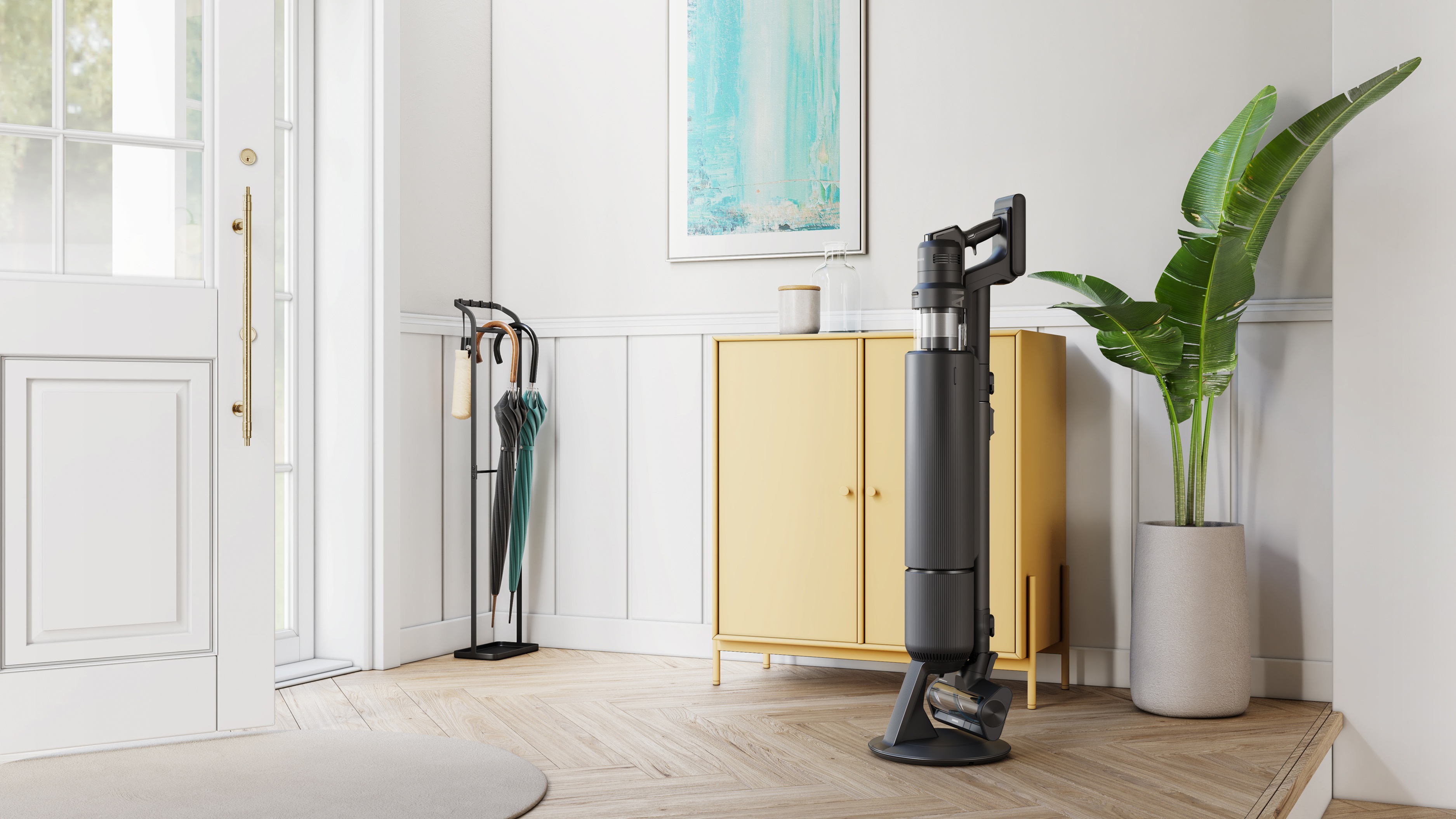 5 reasons you should be excited about the brand new Samsung Bespoke AI Jet Ultra
5 reasons you should be excited about the brand new Samsung Bespoke AI Jet UltraNot sure if it’s obvious... but I can't wait to try it
By Lizzie Wilmot Published
-
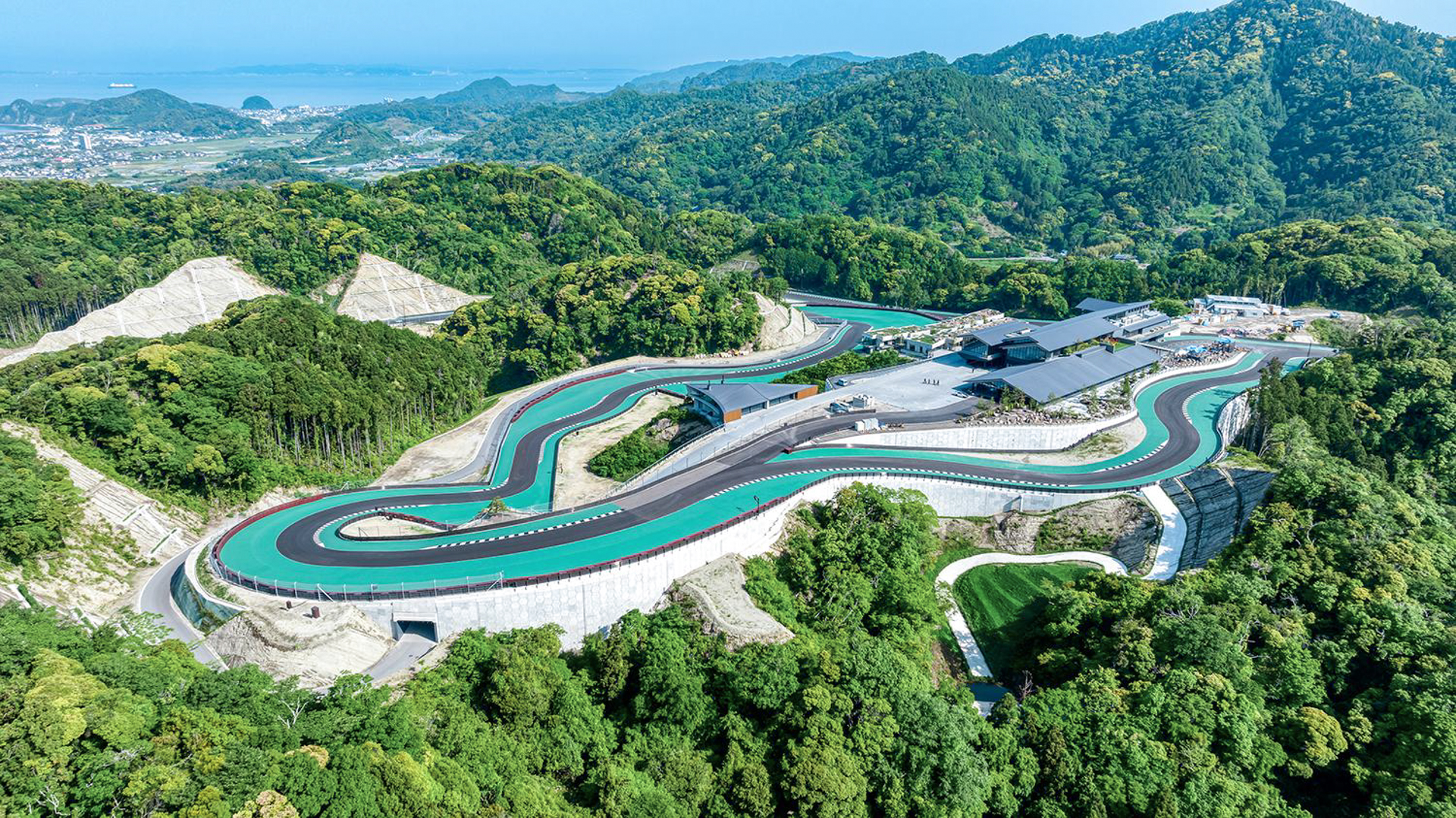 These luxury private members’ clubs have their own race tracks
These luxury private members’ clubs have their own race tracksFrom the UK to the US and Japan, these are the world’s most exclusive race track members’ clubs
By Alistair Charlton Published
-
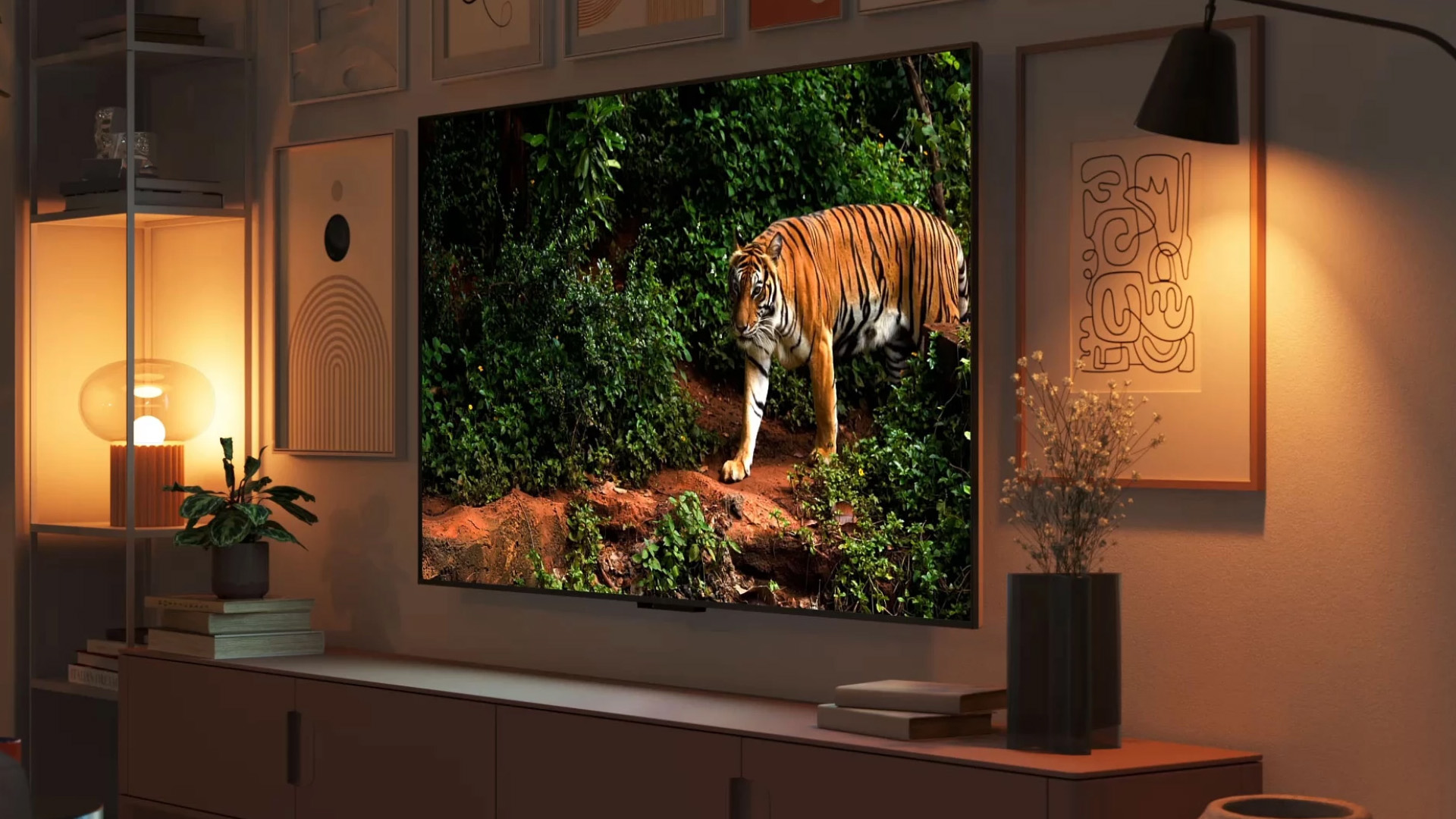 Amazon Fire TV Omni Mini-LED 4K TV review: a huge step up in performance
Amazon Fire TV Omni Mini-LED 4K TV review: a huge step up in performanceAmazon's second-gen Fire TV and first Mini-LED TV is a great option
By Steve May Published
-
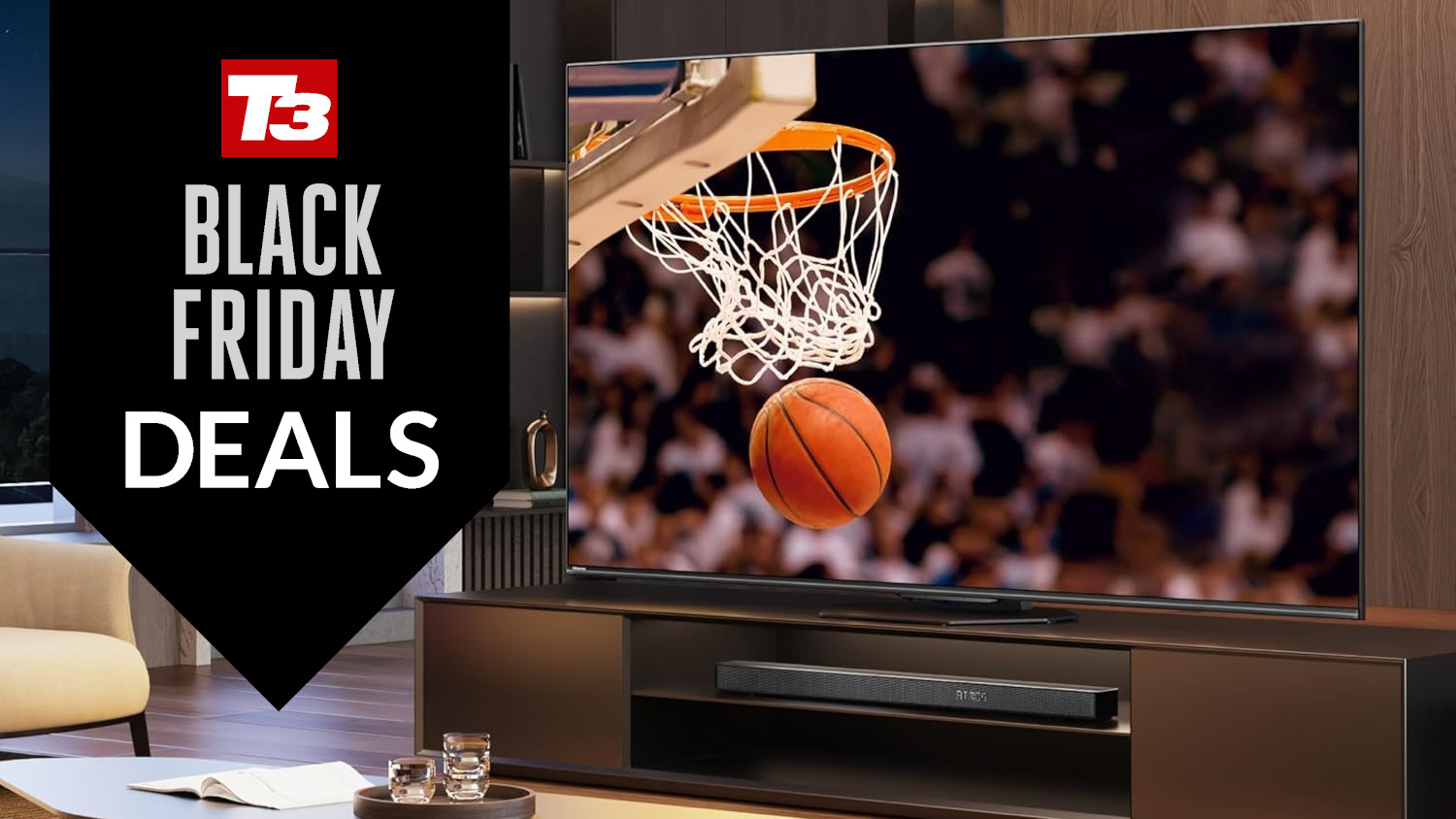 Early Black Friday deal sees price of massive 75-inch TV slashed
Early Black Friday deal sees price of massive 75-inch TV slashedYou'll even get a free copy of NBA 2k25
By Sam Cross Published
-
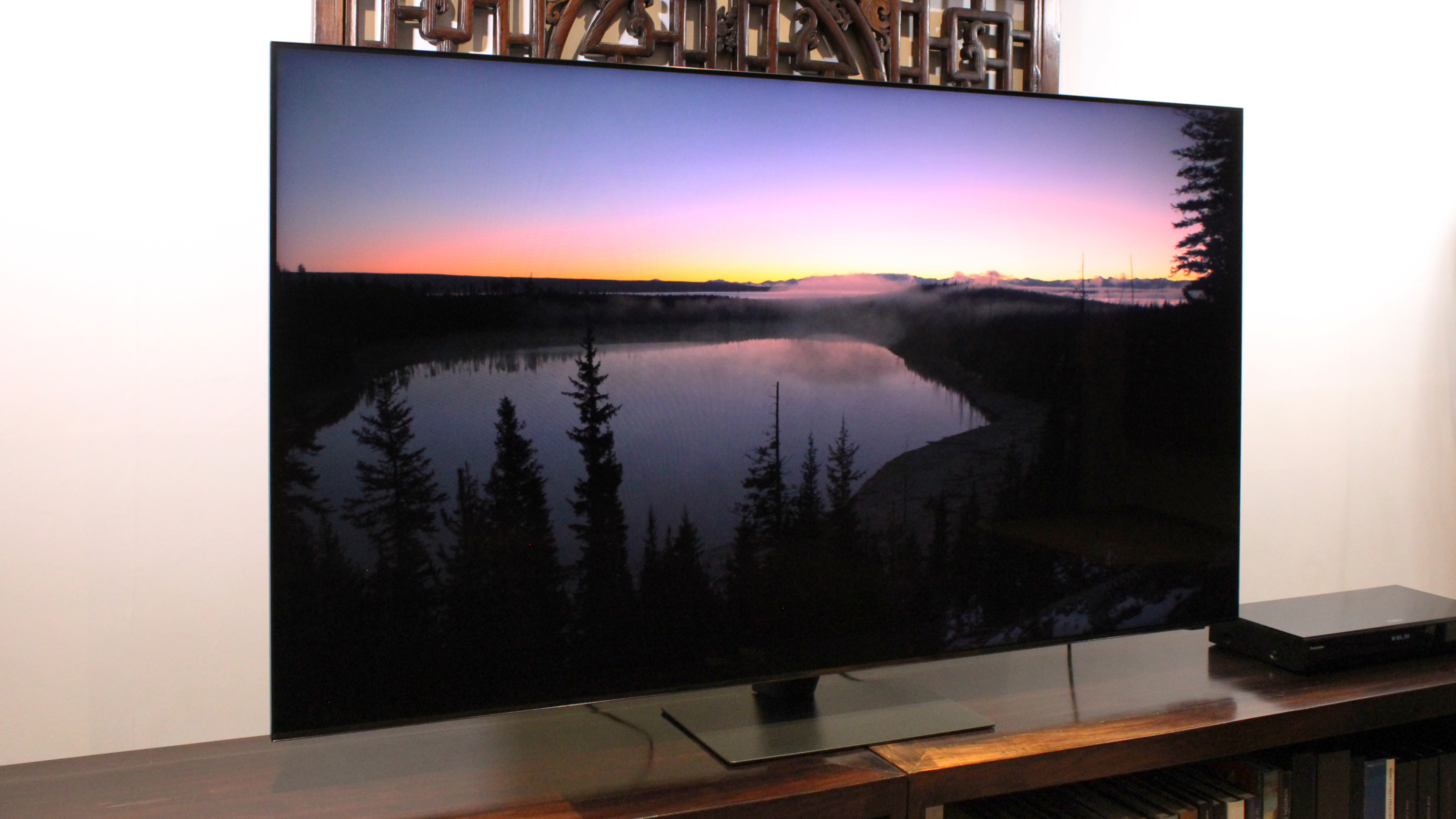 Your Samsung TV just got its biggest free upgrade yet
Your Samsung TV just got its biggest free upgrade yetOne UI is rolling out to the latest Samsung TVs now
By Britta O'Boyle Published
-
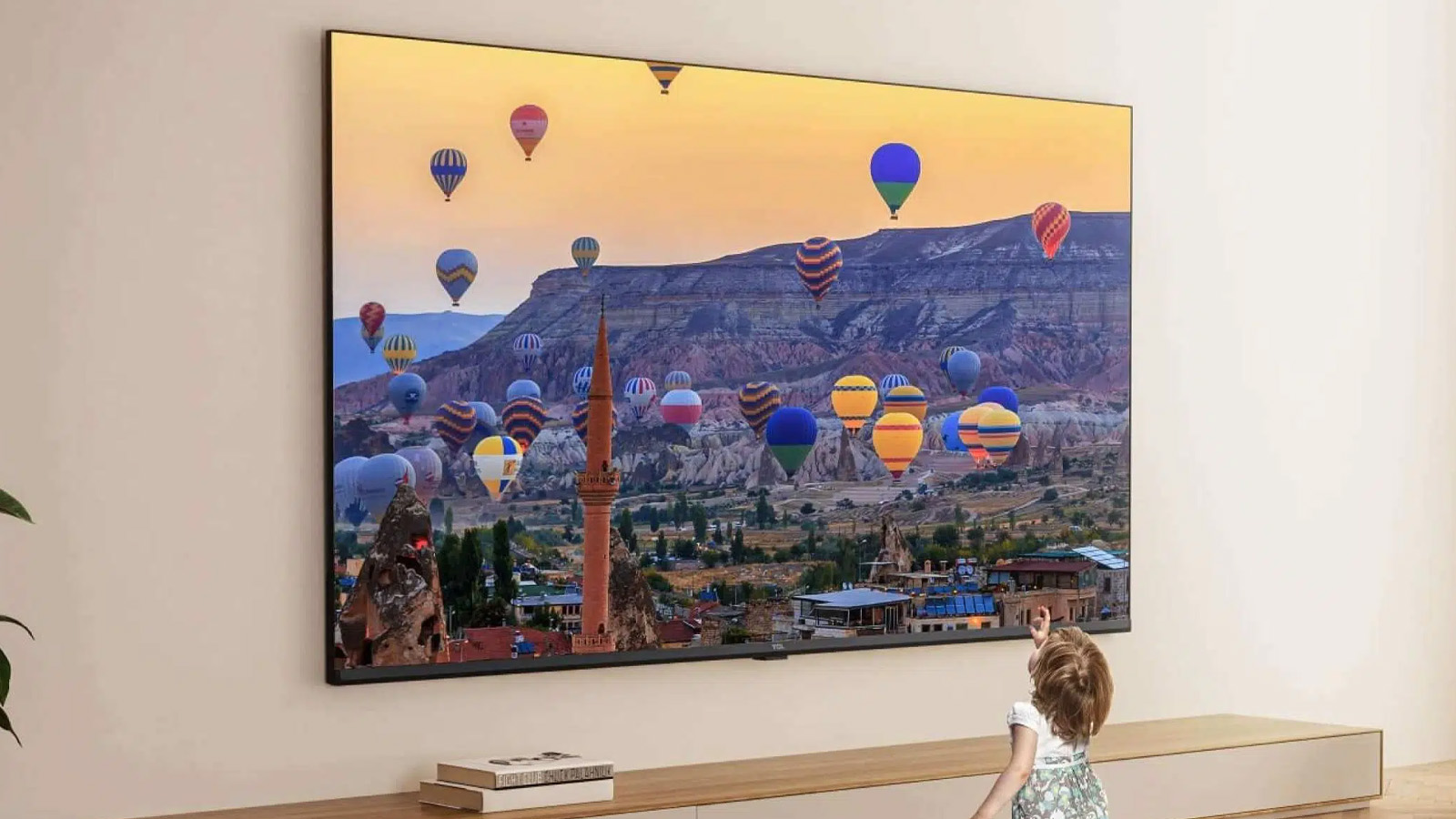 This ultra-bright mini-LED TV is the display of my dreams
This ultra-bright mini-LED TV is the display of my dreamsTCL's next flagship looks fantastic
By Andy Sansom Published
-
 LG TV owners just got Apple TV+ for free
LG TV owners just got Apple TV+ for freeNo matter if you have an LG OLED TV or an LED model, you just got Apple TV+ for free
By Robert Jones Published
-
 Samsung smart TV owners just got a welcome image upgrade
Samsung smart TV owners just got a welcome image upgradeHDR10+ comes to the Apple TV app on Samsung Smart TVs
By Carrie Marshall Published
-
 My LG C1 OLED TV makes The Darkness look incredible on Xbox Series X
My LG C1 OLED TV makes The Darkness look incredible on Xbox Series XThis classic first-person shooter is taken to a new level of awesome thanks to OLED TV tech
By Robert Jones Last updated
-
 TV deals in the Amazon Prime Early Access Sale from Samsung, LG and more
TV deals in the Amazon Prime Early Access Sale from Samsung, LG and moreBlack Friday deals have come early with these TV deals as part of Amazon's Prime Early Access Sale
By Mat Gallagher Last updated